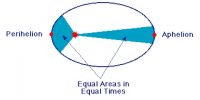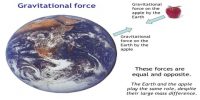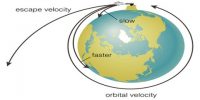A German astronomer, Johann Kepler, first stated the laws of planetary motion.
The three laws of planetary motion are:
- The law of orbits: Every planet moves in an elliptical orbit having the sun at one of the foci.
- The law of areas: The line joining any planet to the sun sweeps out equal areas in equal intervals of time. That is, the areal velocity of the planet is constant.
- The law of periods: The square of the time period of revolution of a planet around the sun is proportional to the cube of the planet’s mean distance from the sun.
Explanation

1st law: ABCD is an elliptical orbit. F and F’ are the two foci. According to the 1st law, the orbit of the planet is elliptical with the sun, as it’s one of the foci.
2nd law: Let the sun is at the focus F. If a planet takes time t coming from A to B, then it will take the same time to come from C to D.
Therefore, according to 2nd law,
Area of AFB = area of CFD
3rd law: Since the planets orbiting the sun in an elliptical orbit, so the distance of a planet will be different for different time.
Let the average distance of a planet from the sun = R and the planet take T time to round the sun once.
According to the 3rd Law, T ∝ R3















